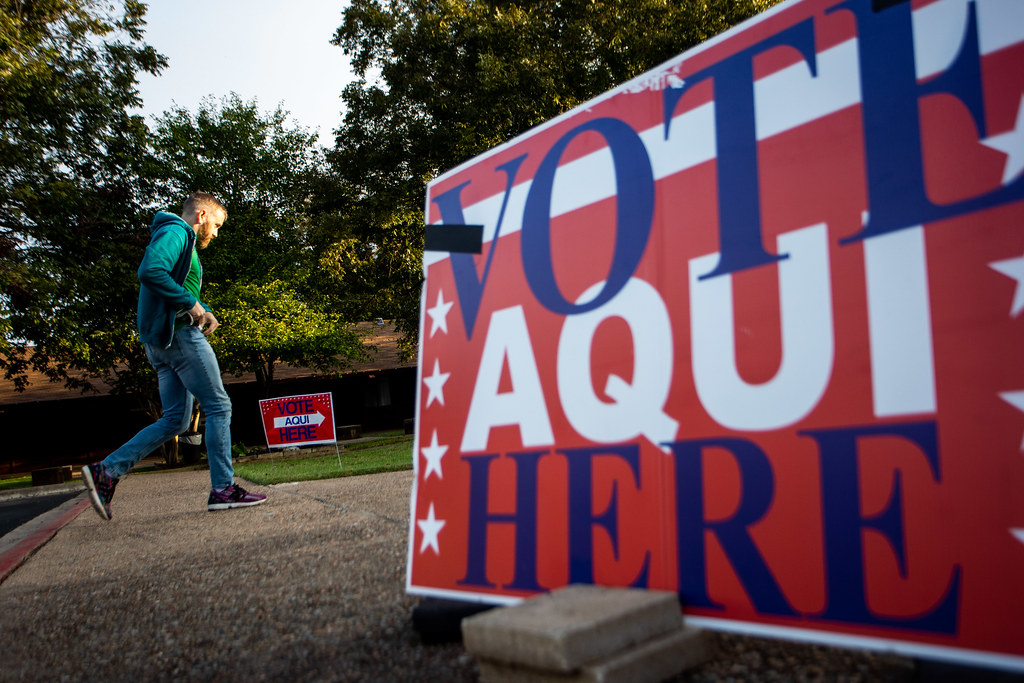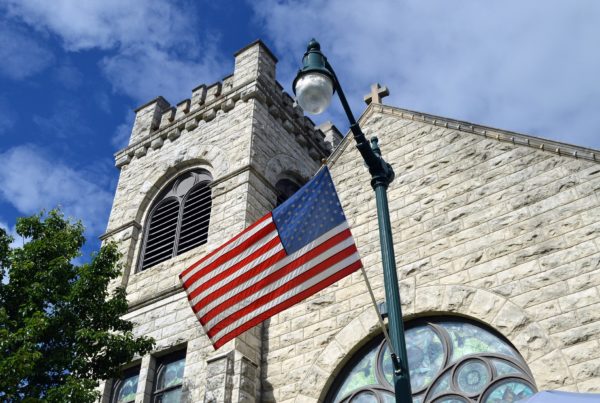People all over Texas will flock to polling places over the next few weeks to cast their ballots in the midterm election. Early voting runs Oct. 24-Nov. 4, and Election Day is Nov. 8.
To be decided by voters are some key positions in the state government, such as governor, lieutenant governor and attorney general. More locally, there are races for state senators and state representatives, county judges and commissioners, judicial seats and roles on the State Board of Education.
Before you head to the polls, check out this detailed guide to make sure you know where to go and when, what to bring and how to ensure your votes are counted and your voices are heard.
How to check your voter registration in Texas
First thing’s first. Are you registered to vote?
The state-imposed deadline has passed for registering to vote in the Nov. 8 election, but residents can verify their registration status before going to the polls. A statewide search tool is available on from the Texas Secretary of State’s Office here.
Early voting in Texas
Early voting begins Monday, Oct. 24 and concludes Friday, Nov. 4. Any registered voter can choose to vote during the early voting period instead of waiting until Election Day, when lines at polling places could be longer.
Many counties allow voters to cast ballots at any polling location within their jurisdiction, regardless of where they live. Other counties may require voters to go to the polling location in their home precinct.
Check with your local voter registrar or elections office to see where they allow you to vote and when polls are open during early voting as times can vary from county to county. Some counties’ procedures for early voting may differ from their protocols on Election Day.
Voting on Election Day
Polls will be open from 7 a.m. to 7 p.m. statewide on Tuesday, Nov. 8. As long as a voter is in line at a polling location by 7 p.m., he or she will be allowed to vote.
As with early voting, some counties allow voters to cast ballots at any polling location within their jurisdiction, whereas others require voters to vote in their home precincts. Check with your local voter registrar or elections office.
» MORE: Everybody wants the ‘Latino vote’ in Texas – but what do Latino voters want? Share your thoughts
What you can bring to the polls
Voters should bring forms of photo identification or other materials that confirm their identity and right to vote in the election (see more on this below). They also can bring sample ballots and handwritten notes.
No phones, tablets, laptops, cameras or any device that can communicate wirelessly or record sound or images may be used inside a polling location or within 100 feet of one.
Voters likely will notice 100-foot markers as they approach a polling place. Within that 100-foot space, no one is allowed to post, use or distribute any signs or literature relating to a candidate, political party or measure appearing on the ballot in that election.
Voters who need assistance casting their ballots, including for translation purposes, are permitted to bring one other person to help them – as long as that person is not their employer, an agent of their employer or an officer or agent of their union. These voters must notify the presiding election judge so the helper can take an oath and sign paperwork swearing they are not forcing the voter to cast a ballot against their will and are not persuading the voter to vote a certain way.
What you can wear to the polls
Texas law prohibits voters from wearing clothing, hats, buttons and other forms of apparel at the polls if those items relate to a candidate, political party or measure appearing on the ballot in the current election. However, apparel related to candidates, parties or measures that are not on the ballot are allowed inside polling locations.
For example, a T-shirt with a “Beto for Texas” logo is not allowed at polling places because Beto O’Rourke is a gubernatorial candidate facing Gov. Greg Abbott in this election. A red “Make America Great Again” hat would be allowed, however, since former President Donald Trump does not appear on this year’s ballot.
Acceptable forms of ID
Registered voters can cast provisional ballots without any form of identification, but that requires some legwork after voting. To ensure your civic duty is fulfilled as soon as you cast your ballot, bring one of the following forms of photo ID to your polling location:
– Texas Driver’s License or ID card issued by the Texas Department of Public Safety (DPS)
– Texas Handgun License issued by DPS
– U.S. citizenship certificate containing photo
– Texas Election Identification Certificate issued by DPS
– U.S. passport (book or card)
– U.S. military ID containing photo
With the exception of the citizenship certificate, the ID presented must be valid or, for voters aged 18-69, have expired no more than four years beforehand. For voters who are 70 or older, there are no time limits regarding an expired ID.
Voters with no approved photo ID may apply for an Election Identification Certificate from DPS at no charge.
If voters do not have any of the aforementioned forms of photo ID, they can fill out a Reasonable Impediment Declaration and show a copy or original of one of the following forms of ID:
– Government document that shows name and address, including voter registration certificate
– Current utility bill
– Bank statement
– Government check
– Paycheck
Also acceptable is a certified domestic birth certificate or document confirming birth that is admissible in a court of law which establishes identity. This could include a birth document from a foreign country.
If voters are unable to provide identification or one of the aforementioned supporting documents, they can vote provisionally by signing a provisional affidavit and curing their ballot within six days after the election. They can cure their ballots by bringing an approved form of photo ID to their local voter registrar or elections office.
EXEMPTIONS: Voters with a disability may apply with their county voter registrar for a permanent exemption to showing acceptable photo ID or following the Reasonable Impediment Declaration procedure at the polls. Voters with a religious objection to being photographed, or those who do not present an acceptable form of photo ID or follow the Reasonable Impediment Declaration procedure at the polls because of certain natural disasters, may apply for a temporary exemption to those requirements. Voters should contact their local voter registrar for more details about those exemptions.
» MORE: How disinformation is threatening the midterm elections in Texas
Voting by mail in Texas
Texans who meet certain requirements can receive and cast ballots by mail instead of voting at a polling location. Voters in the following groups are eligible to vote by mail:
– Age 65 or older on Election Day
– Sick or disabled
– Will be out of their home county during early voting and on Election Day
– Expected to give birth within three weeks before or after Election Day
– Jailed but otherwise eligible to vote
The deadline to request a mail ballot is no later than the 11th day before Election Day, which in the case of the upcoming midterm is Friday, Oct. 28.
Per the requirements outlined in Senate Bill 1, the elections law passed in 2021 by the Texas Legislature, all mail-ballot applications as well as submitted mail ballots must include one of the following identification numbers that match what is on the voter’s registration record: Texas Driver’s License or state-issued ID number, Texas Election Identification Certificate number or the last four digits of the voter’s Social Security Number. Voters can help ensure their mail-ballot applications and submitted mail ballots are accepted by including all the aforementioned ID numbers that apply to them.
Voting-by-mail applicants who are at least 65 years old or disabled qualify to submit an annual application, which means they’ll receive mail ballots for all elections during a calendar year. Those can be submitted from Jan. 1 until no later than 11thday before Election Day (Oct. 28 for this election).
If mail-ballot applicants decide to instead vote in person, they can do so by bringing their mail ballot to surrender at the polling location. If they do not bring their unused mail ballot, they can vote provisionally.
Completed mail ballots must be postmarked by 7 p.m. on Election Day and received by 5 p.m. on the first mail delivery day after Election Day. If they are sent by common or contract carrier – such as a personal courier, FedEx or UPS – ballots must be received by 7 p.m. on Election Day. Or, if the carrier provides a receipt mark indicating a time before 7 p.m., the ballot may be received by 5 p.m. on the next mail delivery day.
Ballots from voters who are out of the country must be received by the voting clerk no later than the fifth day after Election Day. Ballots from military voters must be received by the voting clerk no later than the sixth day after Election Day.
Do the following when completing and submitting a mail ballot:
– Use black or blue ink
– Place the completed ballot in the envelope and seal it
– Place the sealed envelope in the enclosed pre-addressed carrier envelope
– Provide the appropriate ID number or numbers underneath the flap of the carrier envelope
– Seal the carrier envelope and sign where indicated, using the same signature as used on the mail-ballot application
– Place the appropriate postage and send
Voting accessibility
Voters with disabilities – including hearing, vision and mobility impairments – have resources available to them as required by law.
Curbside voting is available for those who cannot physically enter a polling place. Such voters may ask an election officer to bring a ballot to a parked vehicle at a polling place’s designated curbside location. After marking their ballots, curbside voters can give them to the election officer or, at their request, to a companion who will then submit the completed ballot.
Voters with mobility limitations can ask an election official for voting order priority, which will prevent them from having to stand in line. Whether that priority is granted is up to the presiding election judge.
Special circumstances
Voters can apply for a late ballot because of sickness or disability, between last day of early voting (Nov. 4) and 5 p.m. on Election Day. In order to qualify for a late ballot, the sickness or disability must originate on or after the 12th day before Election Day.
Voters may also apply for a late ballot due to a death in their immediate family that occurred on or after fifth day before Election Day and causes them to be absent from their home county on Election Day.














